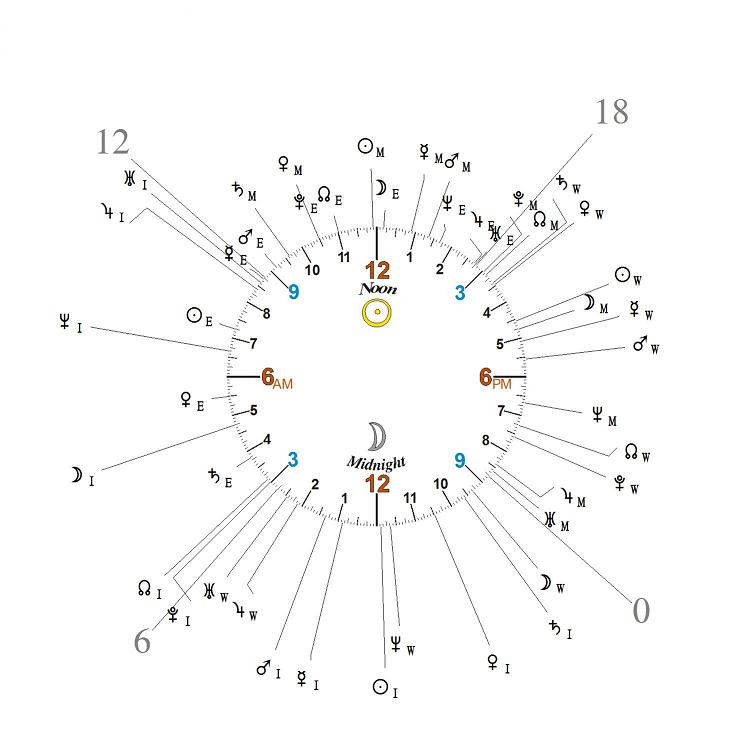Parans (resurfaced)
 Thursday, September 20, 2012
Thursday, September 20, 2012 Parans are the true angular relationship between planets and/or stars. When a planetary body rises, sets, culminates, or is at the nadir (the lowest point under the earth/the foundation of the chart), and another planet or star is exactly rising, setting, culminating, or at the nadir, they are said to be in paran to one another. Parans in a natal chart, as well as in mundane (world event) astrology, are very descriptive. They show intense combined energy.

These are the parans for 11/11/2010 (the time/date this post was originally written).
The image above is a "paran clock". Notice the exact angular relationship (though it looks like a conjunction) between Venus and Pluto - located at the top of the chart @ 10:30am PDT. Venus is culminating, "M" stands for Meridian, while Pluto is rising in the East, "E." Notice in the chart below Venus is culminating too, but Pluto is not as angular by ecliptical degree. This is where the typical two-dimensional chart breaks down, it can't capture the actual spatial relationship between planets, it only captures them by zodiacal degree.

In the image below you can see Pluto is clearly on the horizon at the time Venus is culminating, the horizon is the Ascendant or what astrologers call the rising sign. But Pluto's true relationship to the horizon isn't seen accurately in the chart above. Pluto, in fact, is even in another sign!

I think this phenomenom, Pluto on the horizon while Venus culminates (if Pluto were visible), would have been exceptionally important to the ancients, just as stars on angles were. Today we often miss truly angular relationships, and we miss when stars are actually on angles because we view everything as if it were "on the ecliptic". Only the Sun is forever on the ecliptic; for the ecliptic is the Sun's path.
More on parans in the future.
 Kate |
Kate |  Post a Comment |
Post a Comment |  ascendant,
ascendant,  ecliptic,
ecliptic,  horizon,
horizon,  meridian,
meridian,  paran clock,
paran clock,  parans,
parans,  rising sign,
rising sign,  stars on angles,
stars on angles,  venus pluto
venus pluto